Living in this hot and humid climate, one of our favourite desserts to enjoy is shaved ice a.k.a. ais kacang. This needs no explanation, obviously.
Did you know that this frozen delicacy is one of the oldest desserts in the world? Well, blocks of ice shaved into little mounts of snow, must have been easy to create from the beginning of time.
Not only that, shaved ice is also a popular dessert in many Asian countries that can be found in different forms. So we’re not the only ones with ais kacang!
Let’s take a look at the various version of shaved ice around the region.

The closest-sounding one to our Malaysian version, es campur is found in almost every eatery’s menu across Indonesia, from street hawkers to restaurants. Instead of shaved ice that look like snow, this dessert is often served in larger chunks of ice in a shallow bowl or glass. You can also eat them in forms of floats with different toppings and mixture, including condensed milk, pandan syrup, grass jelly, jackfruit, banana, coconut, and avocado. The combinations are never-ending!
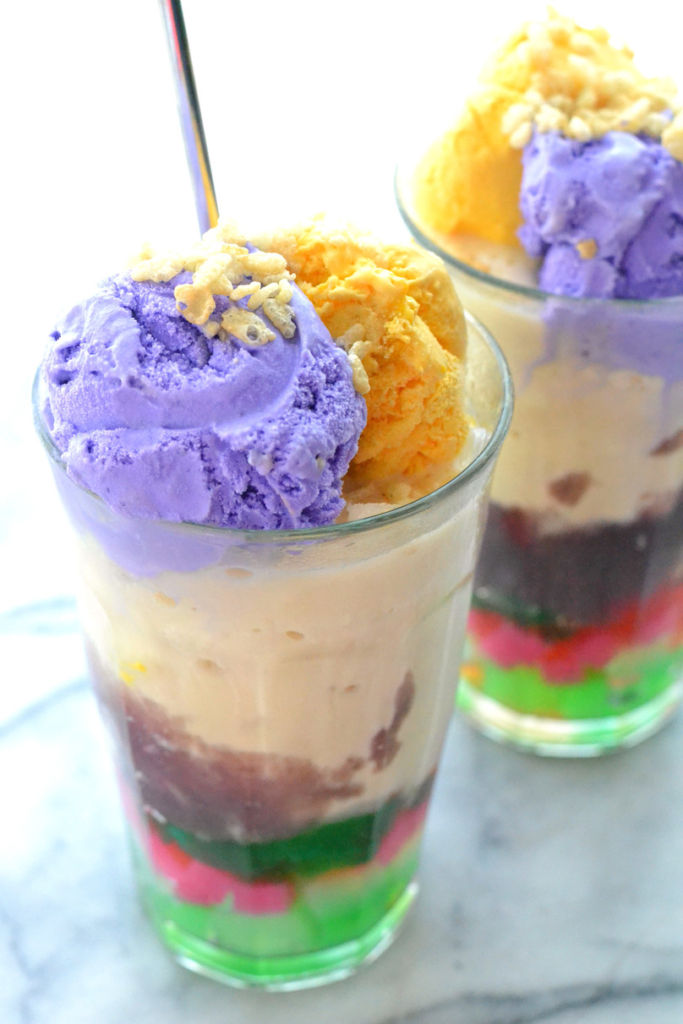
Besides the fun name, this Filipino dessert is normally seen in a tall, clear glass to demonstrate the colourful layers of ingredients. While the mixture may vary depending on personal taste and season, halo-halo often contains fresh fruit, evaporated milk, a jelly-like ingredient (like coconut gel), a crunchy ingredient (like toasted glutinous rice flakes) and ice-cream. Other variations include shredded coconut, mung beans, corn, tapioca pearls, and more. On hot days, this dessert quickly melts into a sweet, creamy liquid that makes the heat so much more bearable.
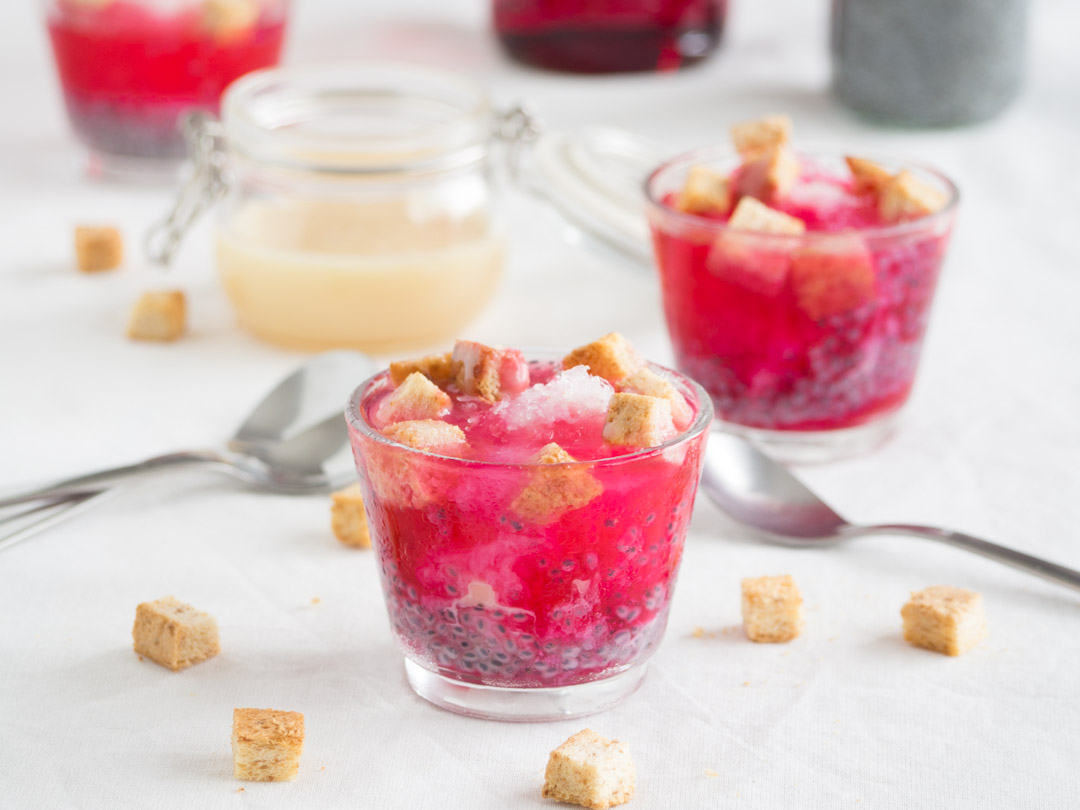
The Thai version of shaved ice focuses on the toppings. Since it is sold mostly at street vendors across the country, you can pick and choose your own combination using ingredients like jackfruit, yam, corn, water chestnuts, and even cubes of bread. At the bottom of the bowl lies a mixture of chopped ingredients, while larger chunks go on top. Finally, a bowl of nam kang sai is topped with a generous dose of coconut milk and sala syrup, an artificial sweet red syrup.

In South Korea, this dessert is so famous that there are songs made about it. When the summer season hits, the country can heat up like no other. Hence, all locals and tourists alike turn to patbingsu for refreshment. The snowy texture of the shaved ice melts like cream in your mouth, added with more complex ingredients like sweet red beans, rice cakes, toasted soybean powder, fruits (like kiwi, banana and berries), condensed milk, and sometimes ice-cream or frozen yoghurt with whipped cream. That sounds like heaven to us!
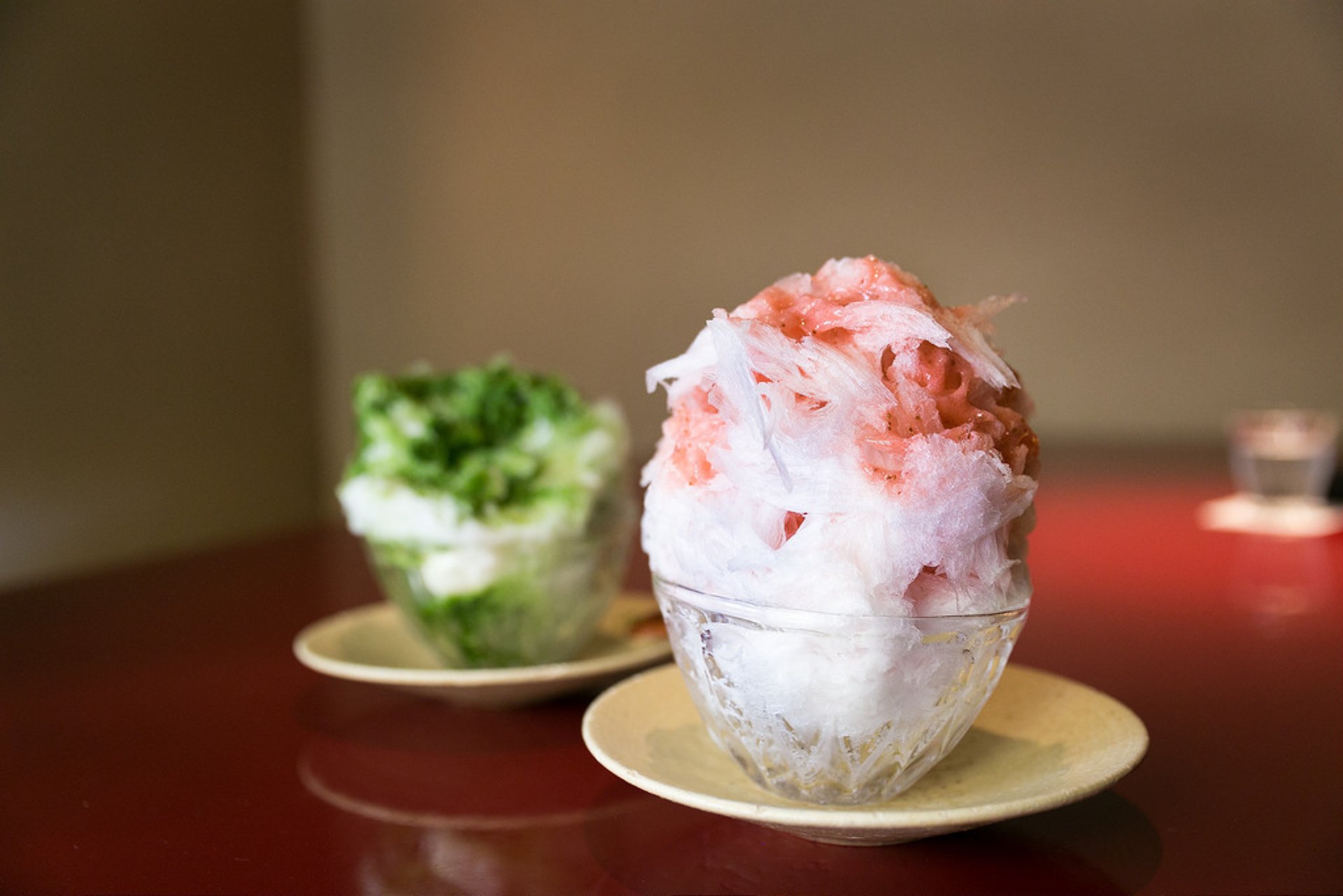
Similar to South Korea, the Japanese have their own kakigori to cool down in the summertime. It is said that in Japan, kakigori dates back all the way to the 10th or 11th century. A kakigori machine comes with a sharp blade that shaves off a large block of ice – either square or round – into a towering mount of snow-like ice. As with most versions, the dessert is topped with flavoured syrup, such as fruit like melon or strawberry, matcha, or mizore, a type of mild white sugar syrup. Some shops would even top the bowl with ice-cream or sweet bean paste for added flavour, and the more gourmet variations would come with Japanese black sugar and candied chestnuts.
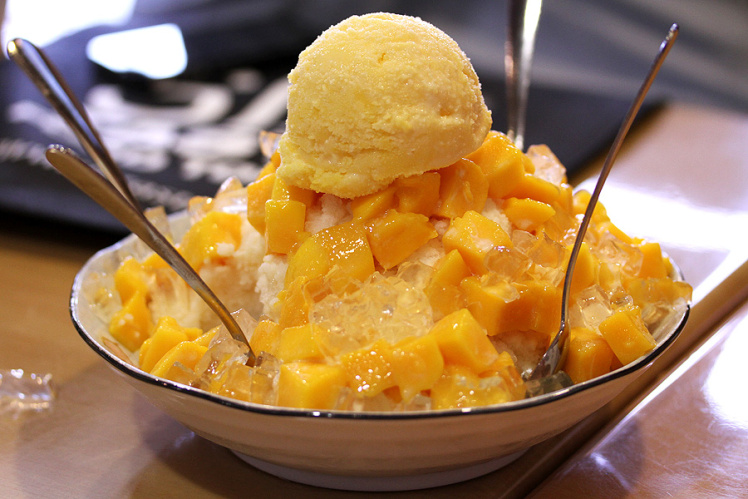
Bao bing is also one of the oldest forms of shaved ice, found as early as the seventh century in China. It is usually served in a big bowl with a generous portion that is meant for sharing. Rather than a snow-like texture, this Chinese dessert is more like thinly shaved flakes or sheets of ice. It is sometimes produced from ice blocks that are already flavoured. Most bao bing stores offer a large variety of toppings, including fruits like mango, lychee and rambutan, beans, peanuts, mochi, grass jelly, and the less conventional ingredients like Oreo and gummi bears.
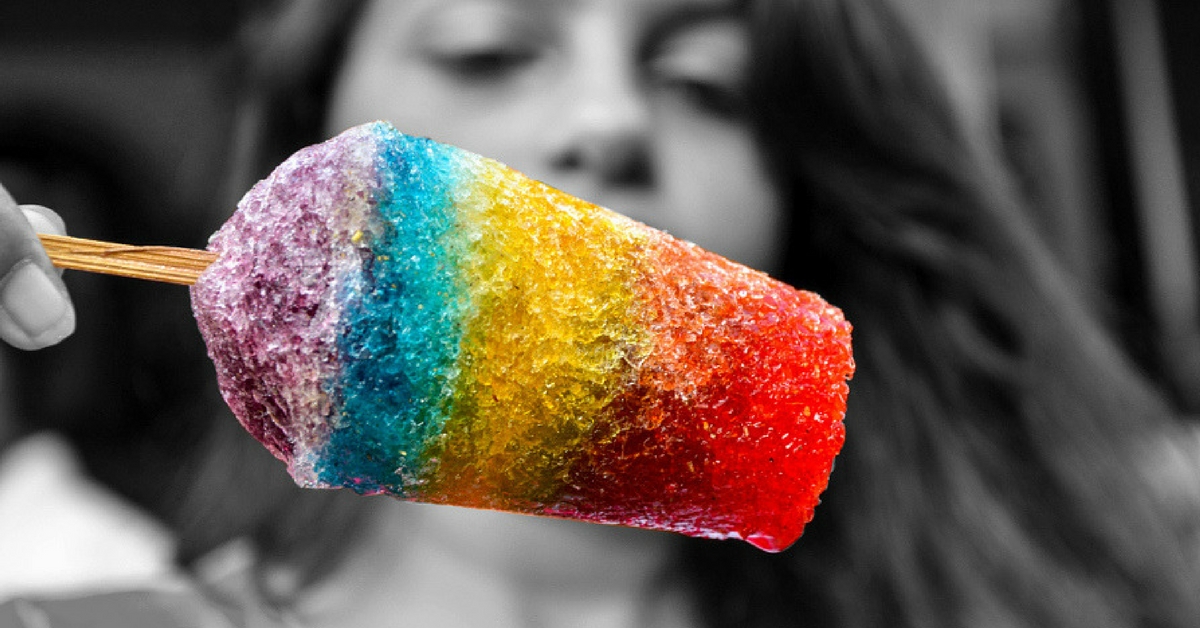
Another famous sweet treat in the heat, gola a.k.a. chuski is seen at most street vendors around India. Unlike its fellow counterpart, this version has a coarser texture like a snow cone and is often prepared using a hand-crank machine. The shaved ice is served condensed into a cup and soaked with flavoured syrup, such as mango, rose and kala khatta, which is made of blackberry and cumin. The unique thing about the gola or chuski is that this concoction is served in a stick, almost like a popsicle. You can also find this in Pakistan, where it is called gola ganda.
So if you want to taste these shaved ice desserts yourself, wait no longer, look out for some awesome travel packages and more at E-Travel Fair now! There are plenty of exciting destinations and activities for you to choose from.
You can also stand a chance to win these packages worth RM30,000 on Gempak’s Instagram Live game show called ‘Tak Boleh Cuti Ke?’ every night at 9pm, beginning 2 to 9 September.
Stay tuned for more!
Did you know that this frozen delicacy is one of the oldest desserts in the world? Well, blocks of ice shaved into little mounts of snow, must have been easy to create from the beginning of time.
Not only that, shaved ice is also a popular dessert in many Asian countries that can be found in different forms. So we’re not the only ones with ais kacang!
Let’s take a look at the various version of shaved ice around the region.
Es Campur (Indonesia)

The closest-sounding one to our Malaysian version, es campur is found in almost every eatery’s menu across Indonesia, from street hawkers to restaurants. Instead of shaved ice that look like snow, this dessert is often served in larger chunks of ice in a shallow bowl or glass. You can also eat them in forms of floats with different toppings and mixture, including condensed milk, pandan syrup, grass jelly, jackfruit, banana, coconut, and avocado. The combinations are never-ending!
Halo-halo (Philippines)

Besides the fun name, this Filipino dessert is normally seen in a tall, clear glass to demonstrate the colourful layers of ingredients. While the mixture may vary depending on personal taste and season, halo-halo often contains fresh fruit, evaporated milk, a jelly-like ingredient (like coconut gel), a crunchy ingredient (like toasted glutinous rice flakes) and ice-cream. Other variations include shredded coconut, mung beans, corn, tapioca pearls, and more. On hot days, this dessert quickly melts into a sweet, creamy liquid that makes the heat so much more bearable.
Nam Kang Sai (Thailand)

The Thai version of shaved ice focuses on the toppings. Since it is sold mostly at street vendors across the country, you can pick and choose your own combination using ingredients like jackfruit, yam, corn, water chestnuts, and even cubes of bread. At the bottom of the bowl lies a mixture of chopped ingredients, while larger chunks go on top. Finally, a bowl of nam kang sai is topped with a generous dose of coconut milk and sala syrup, an artificial sweet red syrup.
Patbingsu (South Korea)

In South Korea, this dessert is so famous that there are songs made about it. When the summer season hits, the country can heat up like no other. Hence, all locals and tourists alike turn to patbingsu for refreshment. The snowy texture of the shaved ice melts like cream in your mouth, added with more complex ingredients like sweet red beans, rice cakes, toasted soybean powder, fruits (like kiwi, banana and berries), condensed milk, and sometimes ice-cream or frozen yoghurt with whipped cream. That sounds like heaven to us!
Kakigori (Japan)

Similar to South Korea, the Japanese have their own kakigori to cool down in the summertime. It is said that in Japan, kakigori dates back all the way to the 10th or 11th century. A kakigori machine comes with a sharp blade that shaves off a large block of ice – either square or round – into a towering mount of snow-like ice. As with most versions, the dessert is topped with flavoured syrup, such as fruit like melon or strawberry, matcha, or mizore, a type of mild white sugar syrup. Some shops would even top the bowl with ice-cream or sweet bean paste for added flavour, and the more gourmet variations would come with Japanese black sugar and candied chestnuts.
Bao Bing (China/Taiwan)

Bao bing is also one of the oldest forms of shaved ice, found as early as the seventh century in China. It is usually served in a big bowl with a generous portion that is meant for sharing. Rather than a snow-like texture, this Chinese dessert is more like thinly shaved flakes or sheets of ice. It is sometimes produced from ice blocks that are already flavoured. Most bao bing stores offer a large variety of toppings, including fruits like mango, lychee and rambutan, beans, peanuts, mochi, grass jelly, and the less conventional ingredients like Oreo and gummi bears.
Gola / Chuski (India)

Another famous sweet treat in the heat, gola a.k.a. chuski is seen at most street vendors around India. Unlike its fellow counterpart, this version has a coarser texture like a snow cone and is often prepared using a hand-crank machine. The shaved ice is served condensed into a cup and soaked with flavoured syrup, such as mango, rose and kala khatta, which is made of blackberry and cumin. The unique thing about the gola or chuski is that this concoction is served in a stick, almost like a popsicle. You can also find this in Pakistan, where it is called gola ganda.
So if you want to taste these shaved ice desserts yourself, wait no longer, look out for some awesome travel packages and more at E-Travel Fair now! There are plenty of exciting destinations and activities for you to choose from.
You can also stand a chance to win these packages worth RM30,000 on Gempak’s Instagram Live game show called ‘Tak Boleh Cuti Ke?’ every night at 9pm, beginning 2 to 9 September.
Stay tuned for more!







